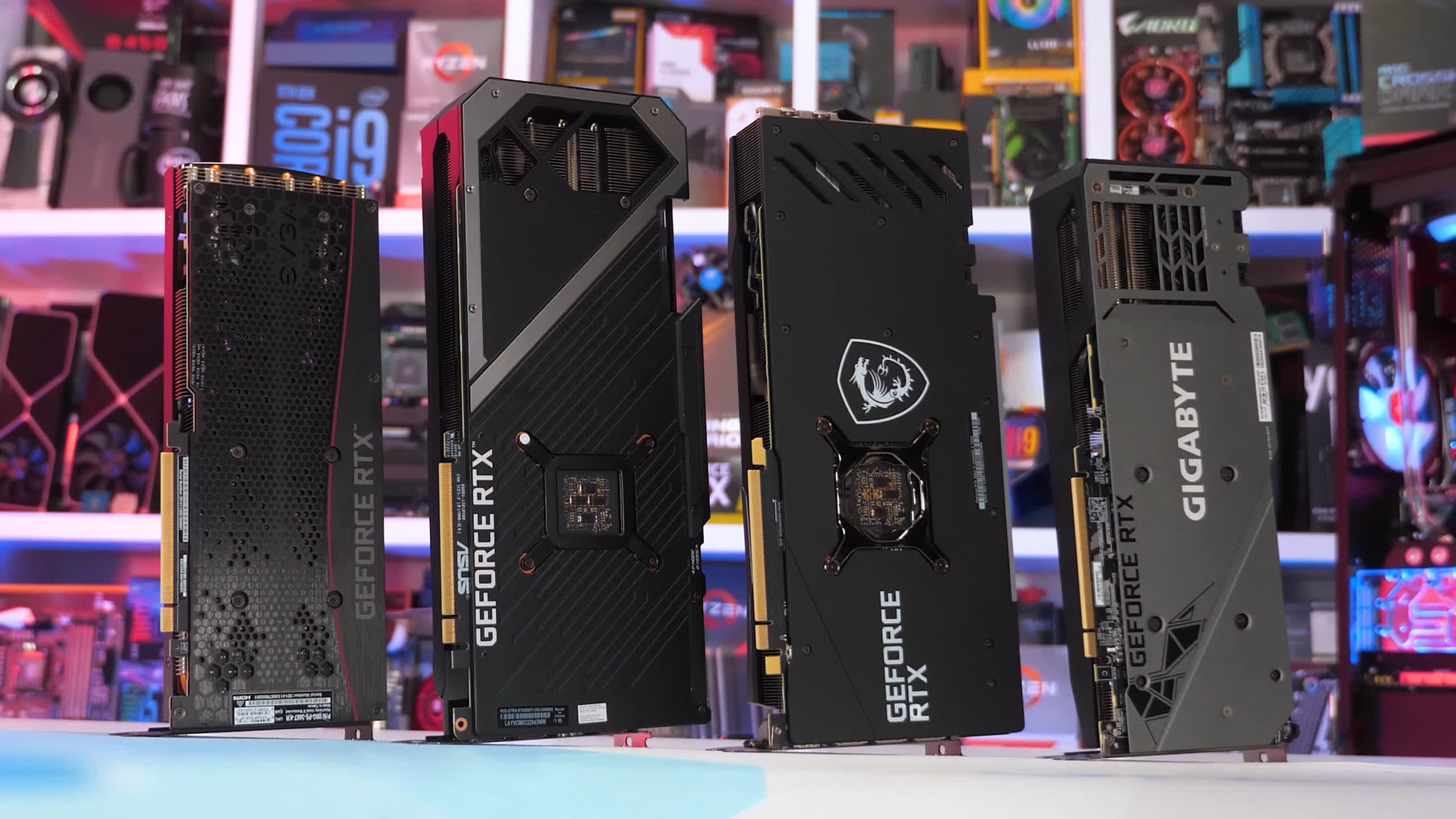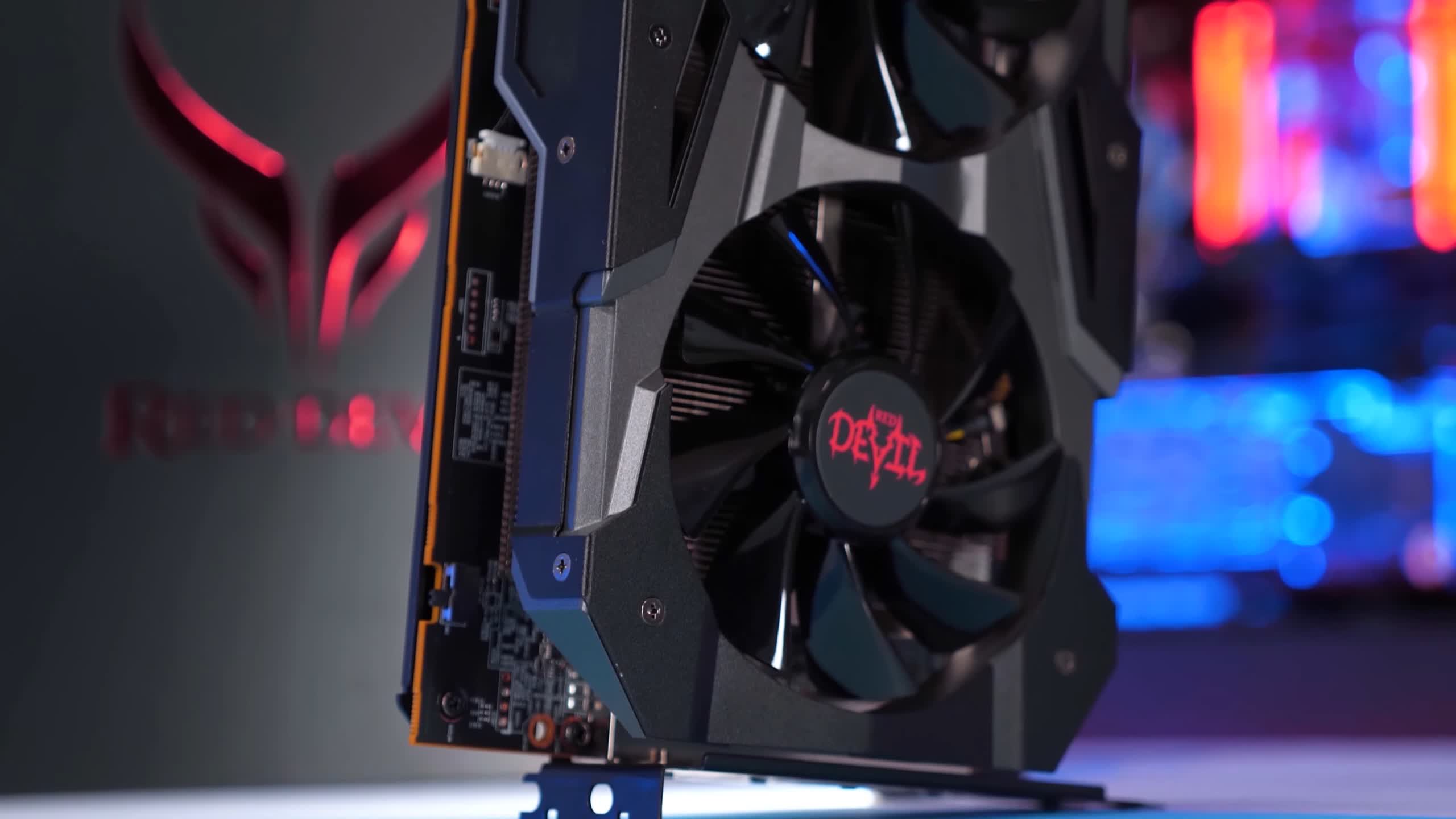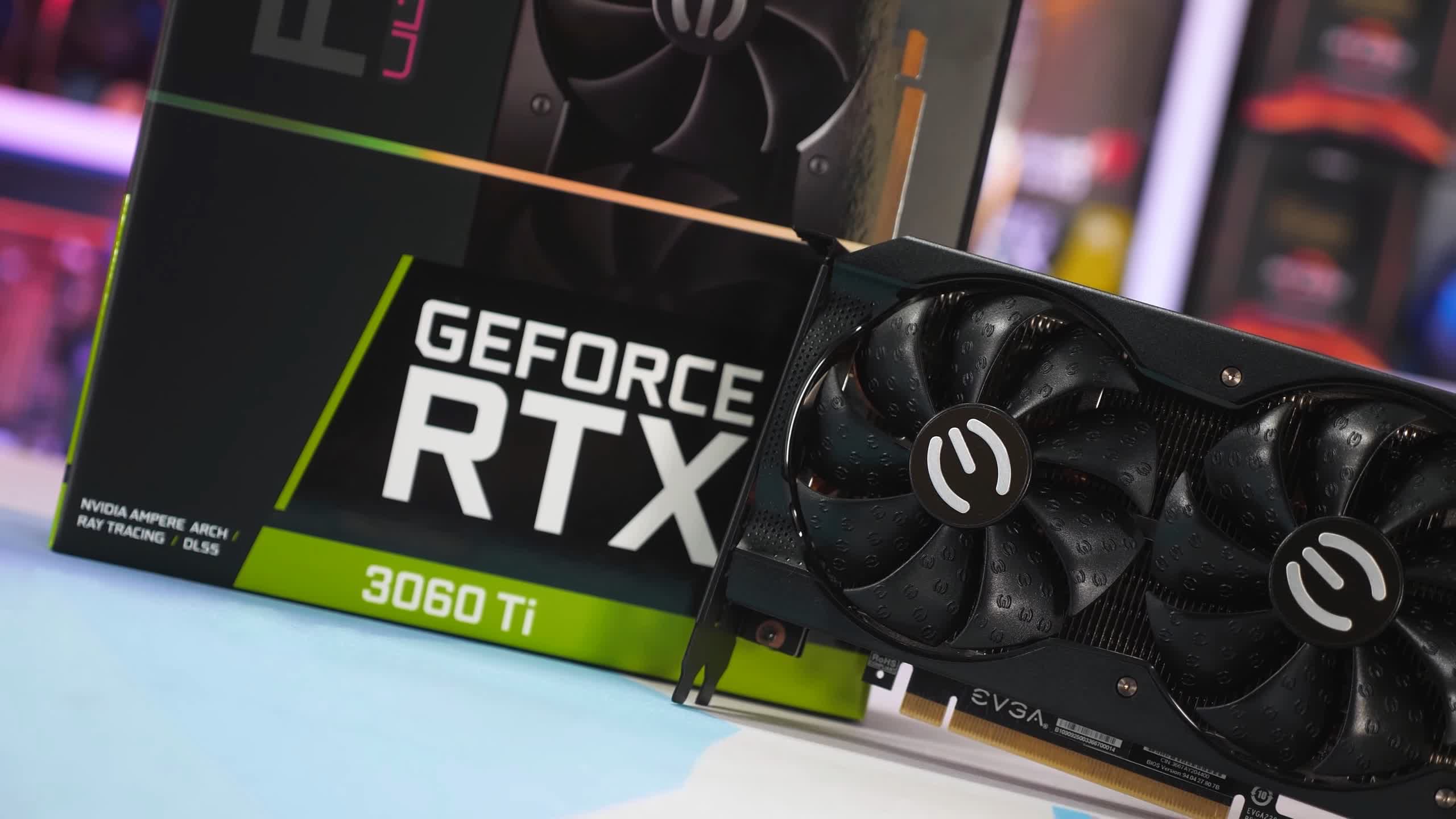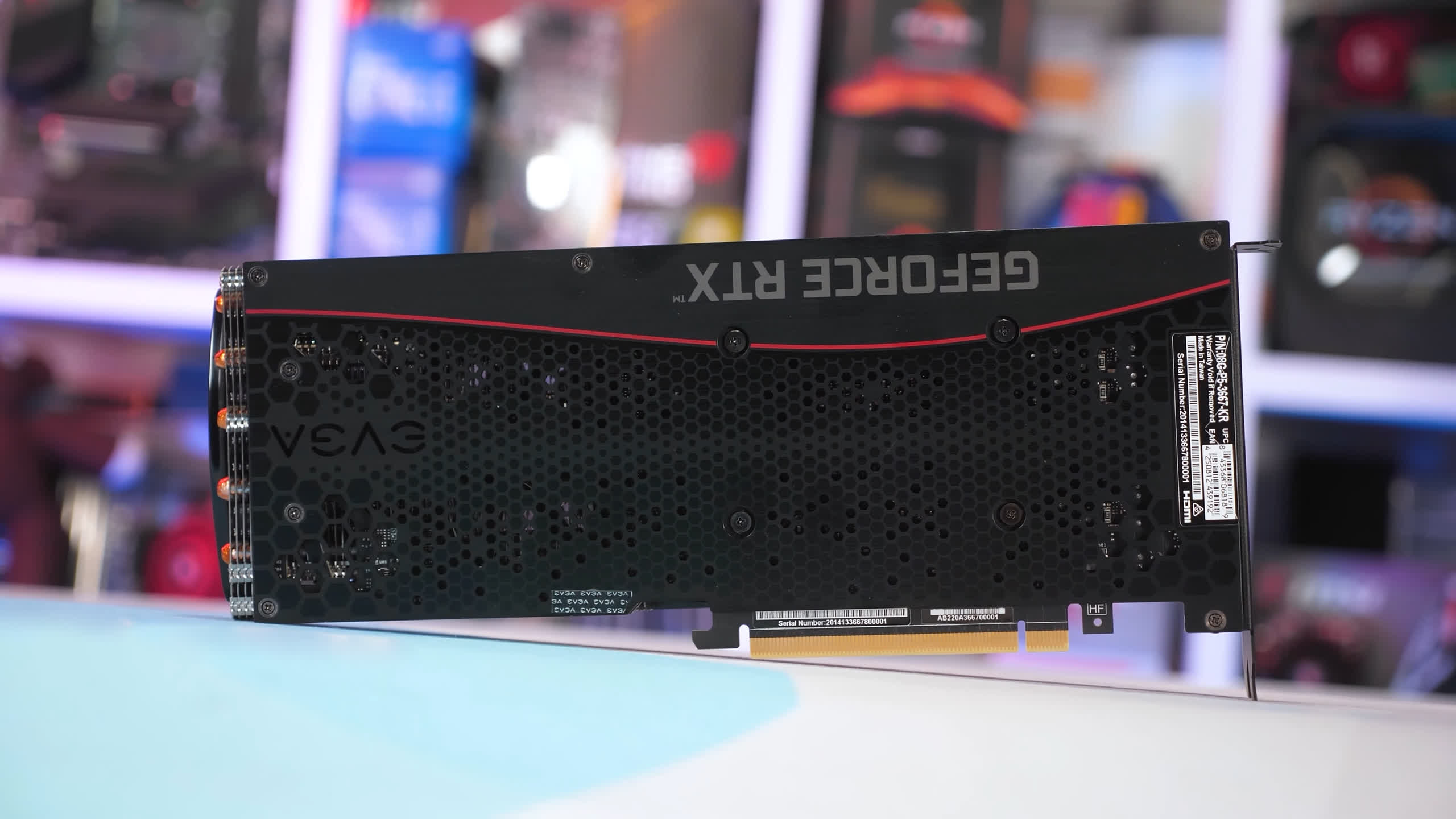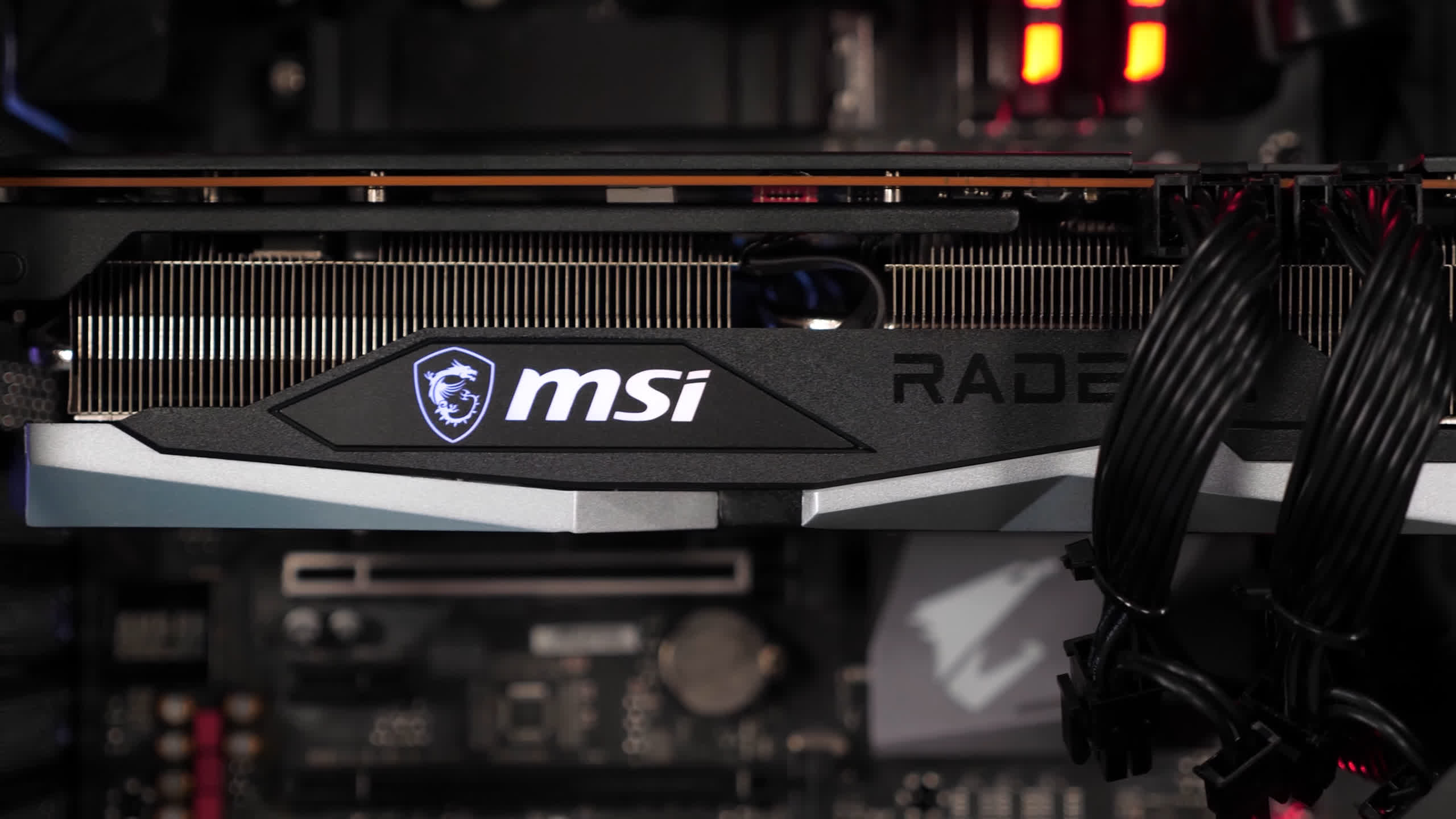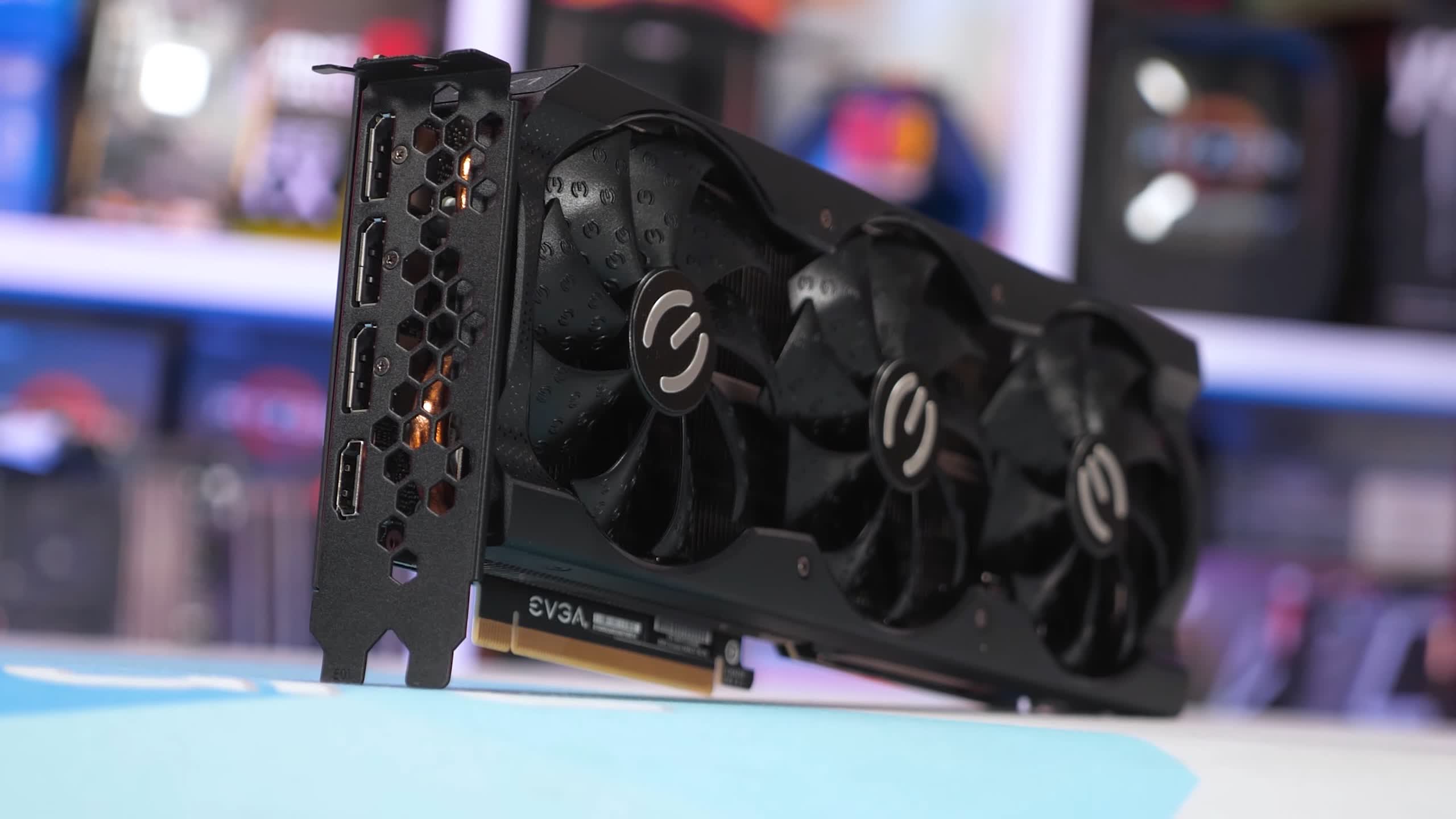We recently compared the GeForce RTX 3070 against the Radeon RX 6700 XT in a 50 game head-to-head battle and the GeForce got the better of the exchanges. It was a close battle for the most part, but the RTX 3070 was faster and considering the feature set, it seemed like the way to go, assuming pricing is competitive.
Some readers were upset with that comparison though, claiming the 6700 XT was designed to compete with the RTX 3060 Ti, a comparison we were always going to make anyway.
Technically speaking, the 6700 XT is priced closer to the RTX 3070 based on MSRP. But no need to lose sleep over that one as today we have another 50 game benchmark comparing the RTX 3060 Ti and 6700 XT, so we can put that debate to rest.
The RTX 3060 Ti is meant to be available for $400 and the RTX 3070 for $500, with the 6700 XT at $480. Actual pricing is higher and all of these GPUs have been priced well over MSRP for the bulk of their existence.
As of writing, the RTX 3070 is closer to $750, while the 6700 XT is down at $600. A 25% price premium for the Nvidia GPU is steep, and a little hard to justify, even with the aid of DLSS and much better ray tracing performance.
If anything, that was a favorable matchup for AMD fans who were unhappy with the previous comparison. The RTX 3060 Ti is much more affordable than the RTX 3070 and slightly less than the 6700 XT at $570.
In a best case scenario for AMD, the 6700 XT and 3060 Ti occupy the same price point, so that being the case it will be interesting to see how they stack up across a massive range of games.
For testing we've used our AMD Ryzen 9 5950X test system with 32GB of DDR4-3200 CL14 dual-rank, dual-channel memory. Both GPUs were tested at 1080p, 1440p and 4K across 50 games, using Windows 11 with Resizable Bar enabled, that means SAM was enabled for the Radeon GPU.
The driver versions used were Radeon Adrenalin 22.3.1 and GeForce Game Ready Driver 512.15, as these were the latest available drivers when we started testing a week ago.
Let's take a look at results for some of the highlight games and then we'll check out how these two GPUs perform across all 50 games in a single comparison graph.
Benchmarks
Starting with Dying Light 2, the Radeon 6700 XT is slightly faster than the RTX 3060 Ti. We're talking about an 8% margin at 1080p, 9% at 1440p, and 12% at 4K.
Usually we'd expect the margin to shrink in Nvidia's favor at the higher resolutions, but that wasn't the case in this game, though admittedly there's little difference between an 8% and 12% margin. Strong performance from the 6700 XT, even if it didn't blow the 3060 Ti away.
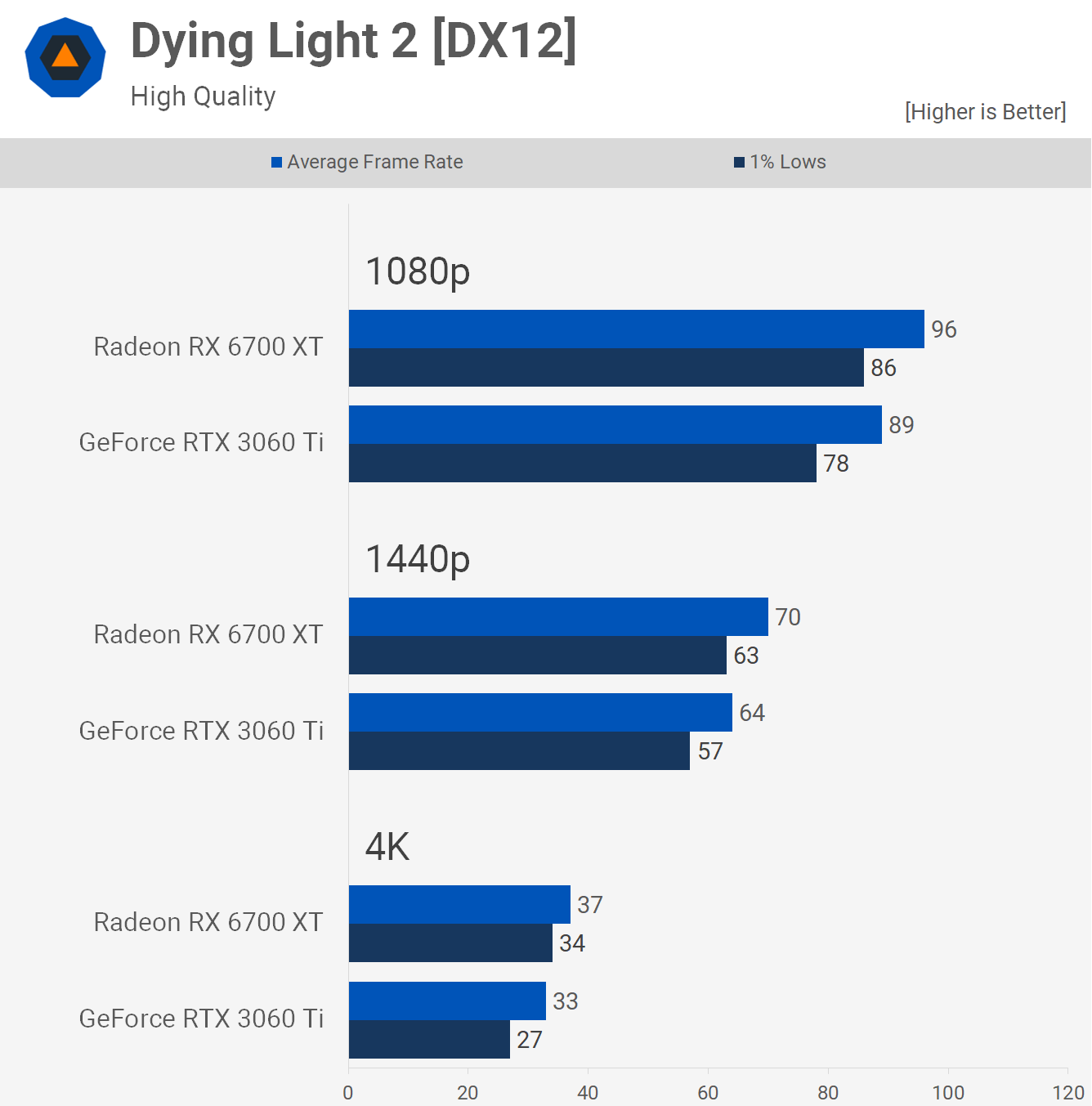
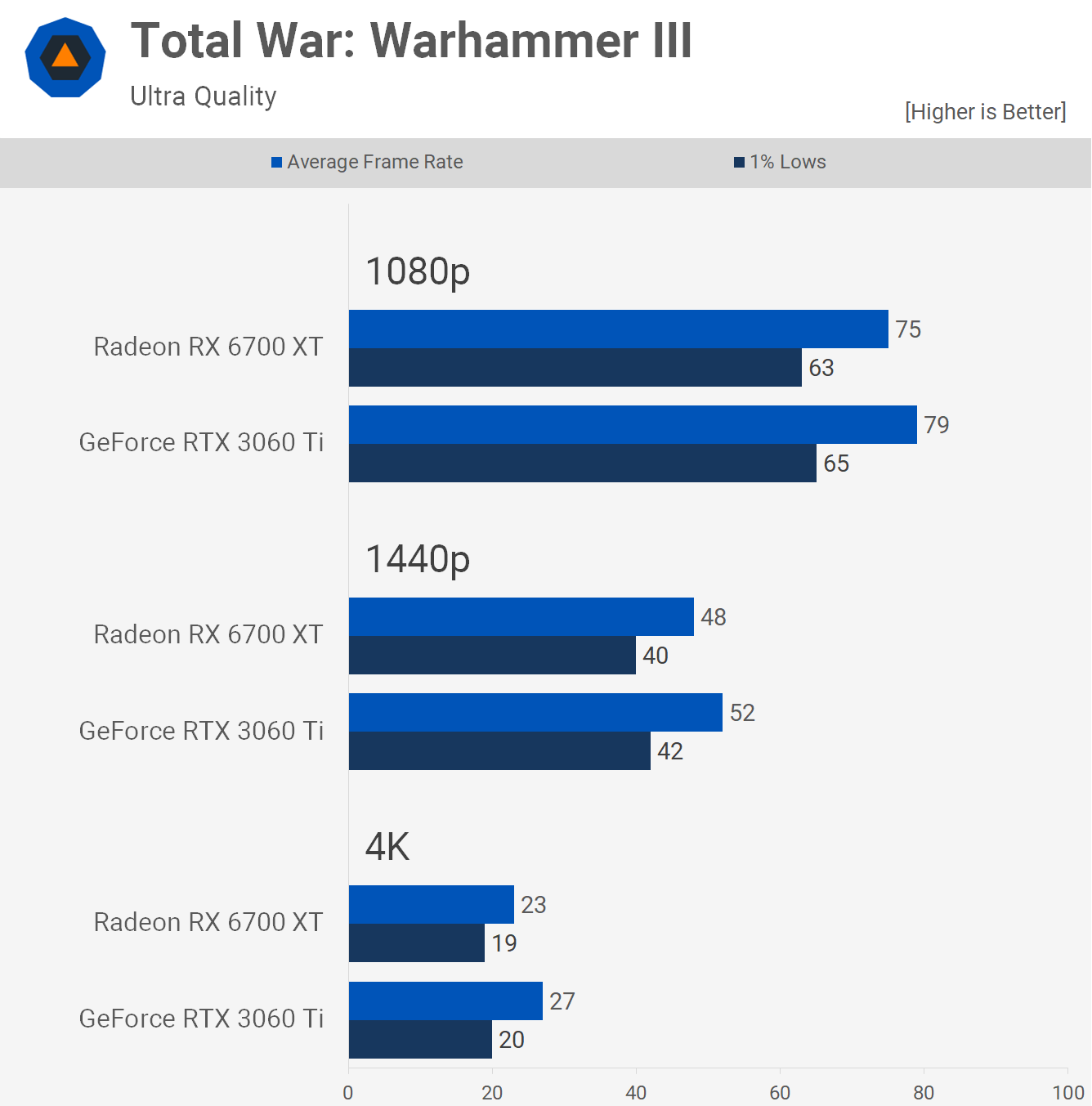
Next we have Total War Warhammer III, and here the results swing slightly in Nvidia's favor with the RTX 3060 Ti offering 5% more frames at 1080p, 8% more at 1440p, and then 17% more at 4K, though neither GPU provided particularly playable performance at 4K.
If you're after a 60 fps+ experience in this title using the ultra quality settings, then 1080p is the optimal resolution for this class of GPU, though we assume most of you would tune the quality settings for 60 fps at 1440p.
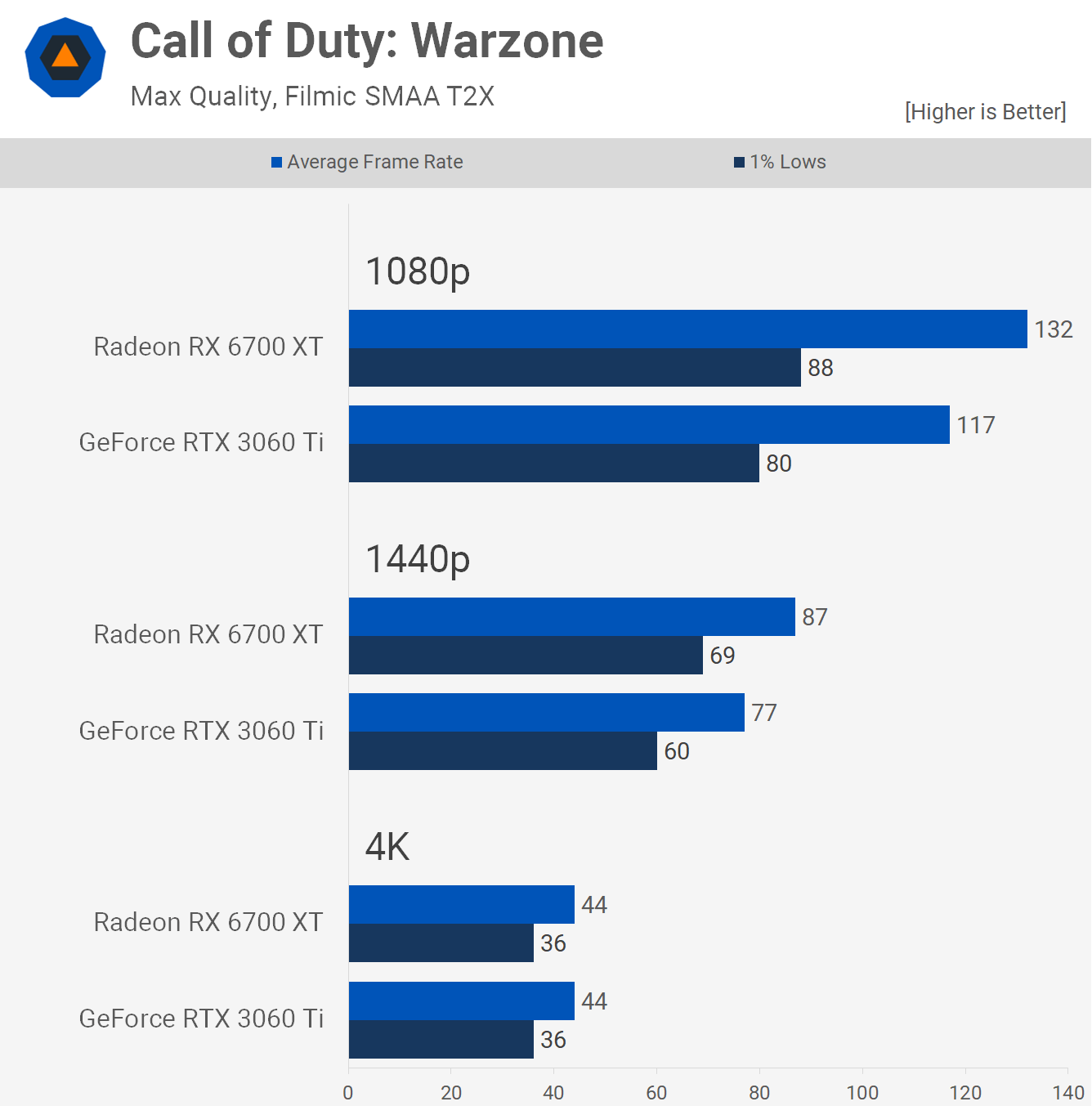
The 6700 XT performs really well in Call of Duty Warzone, pumping out well over 100 fps at 1080p and that made it 13% faster than the 3060 Ti. The Radeon GPU maintained the lead at 1440p and while not a massive difference, you will at times notice the extra 13% performance. Once again, neither are ideal for 4K gaming, with under 60 fps on average.
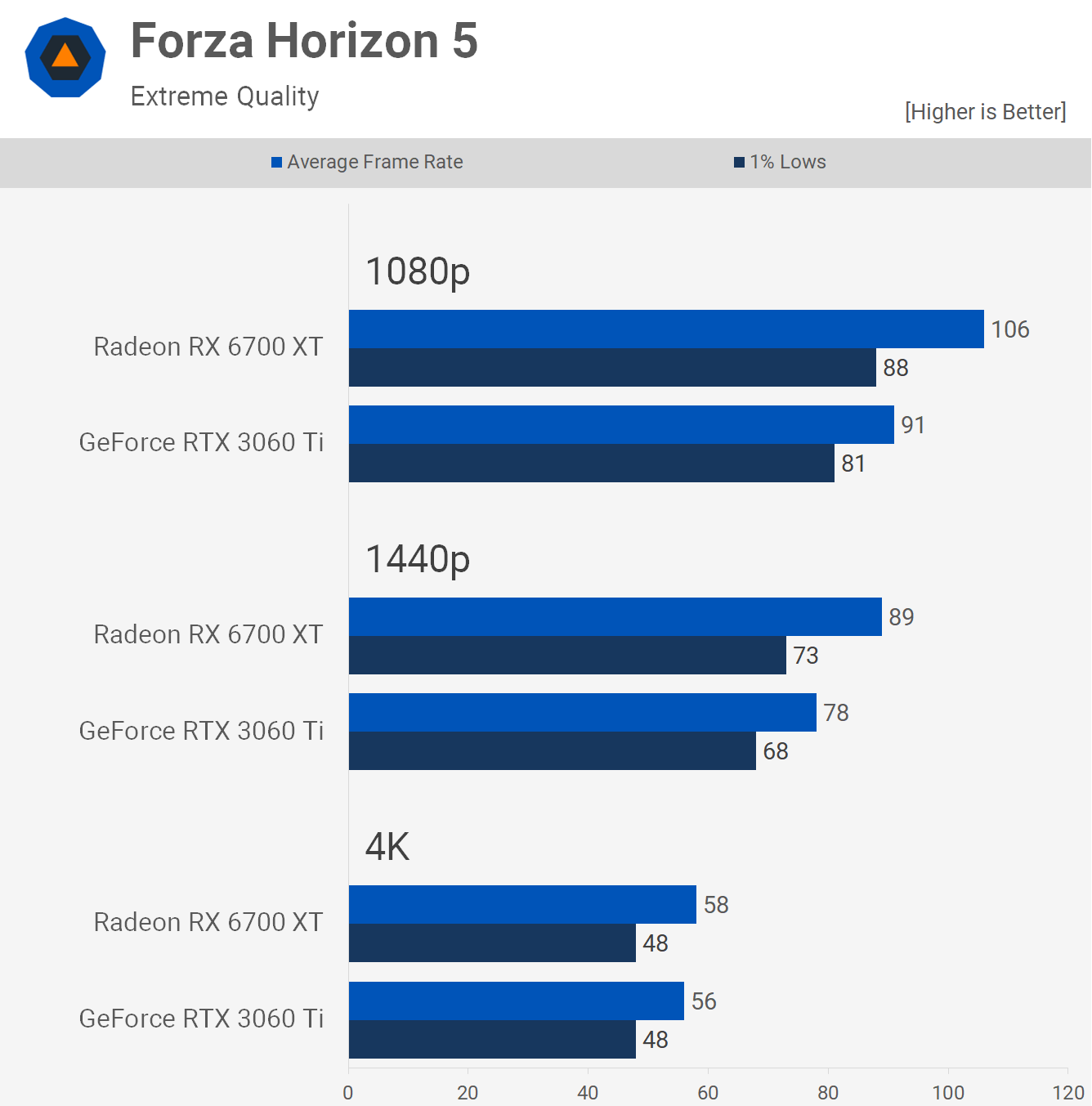
Forza Horizon 5 runs very well on Radeon GPUs, especially with Resizable Bar enabled. The 6700 XT enjoys a strong performance lead at 1080p and 1440p where it was 16% and 14% faster, respectively, and then at 4K the margins close right up and here the Radeon GPU was just 4% faster, so basically the same level of performance was seen at this high resolution.
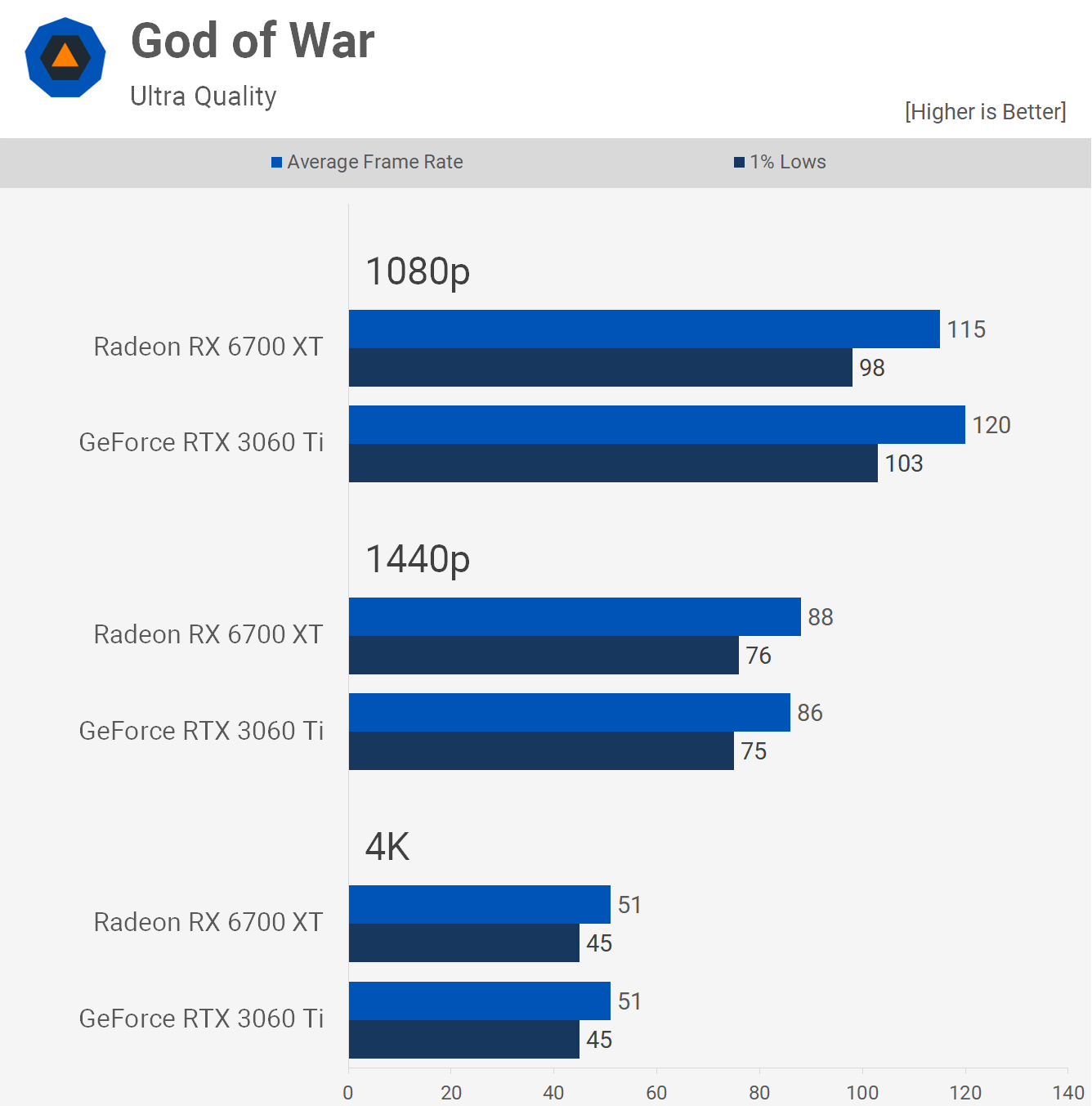
The God of War results are very competitive. Here the RTX 3060 Ti was slightly faster at 1080p, then we saw the same performance at 1440p and 4K.
The 4K results were quite good and it wouldn't take much to ensure frame rates stay above 60 fps on both camps.
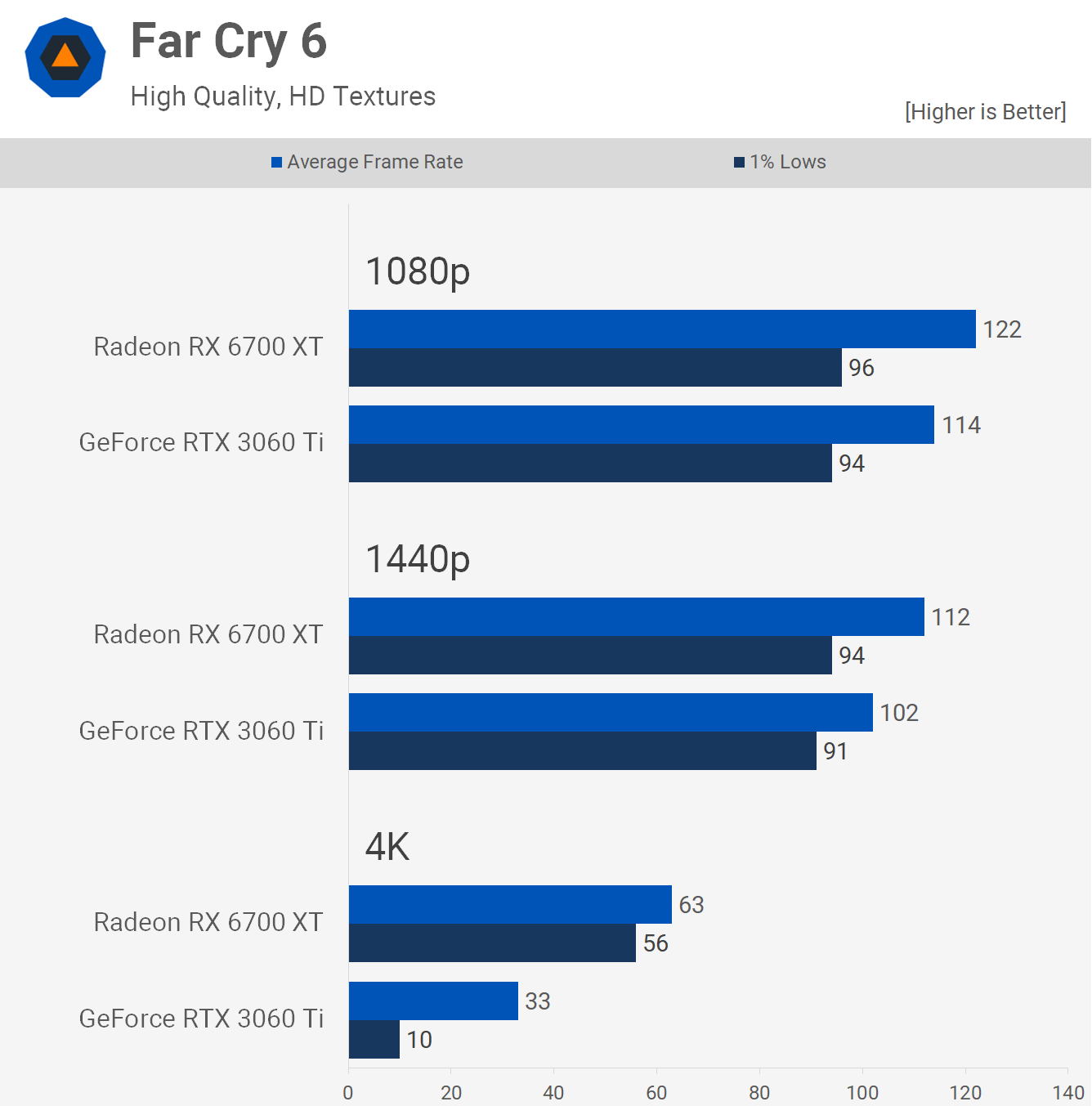
Oh, boy, did Far Cry 6 stir the pot in our last benchmark. We mentioned how AMD fans didn't like us comparing the 6700 XT against the RTX 3070, but then Nvidia radicals did not like us enabling the HD texture back in Far Cry 6 either.
Despite the fact that 6700 XT can deliver over 60 fps at 4K with HD textures enabled, we were told it's highly unrealistic and we did that to make the GeForce GPU look bad.
Truth is, we've always tested games that offer HD texture packs with them enabled, especially when testing mid to high-end hardware. This was nothing new and HD textures shouldn't impact performance assuming you have enough VRAM. It's a free visual upgrade and for most gamers well worth using... again, if you have enough VRAM, which you should when spending $500+ on a graphics card.
Those playing Far Cry 6 at 1080p or 1440p with either the 6700 XT or RTX 3060 Ti need not worry about VRAM in this title, even with the HD texture pack, both worked really well despite the Radeon GPU offering up to 10% more performance. At 4K however, it does become a problem for the 3060 Ti as it's unable to deliver playable performance, while the 6700 XT sailed along without issue thanks to its larger 12GB VRAM buffer.
In our opinion, 12GB VRAM should be the minimum at this price point. Bizarrely, Nvidia's slower RTX 3060 (the non-Ti version) does pack a 12GB VRAM buffer. Go figure.

Moving on to F1 2021, this game enables ray tracing when using the 'Ultra High' quality preset, so we've left it enabled as we like to test with presets where possible.
This setting saw both GPUs render 116 fps on average at 1080p, but at 1440p the RTX 3060 Ti edged ahead by an 8% margin and then took a commanding lead at 4K by a 14% margin. Ideally, you'll want to lower the visual quality settings to boost frame rates, but if you keep ray tracing enabled the GeForce will reign supreme.
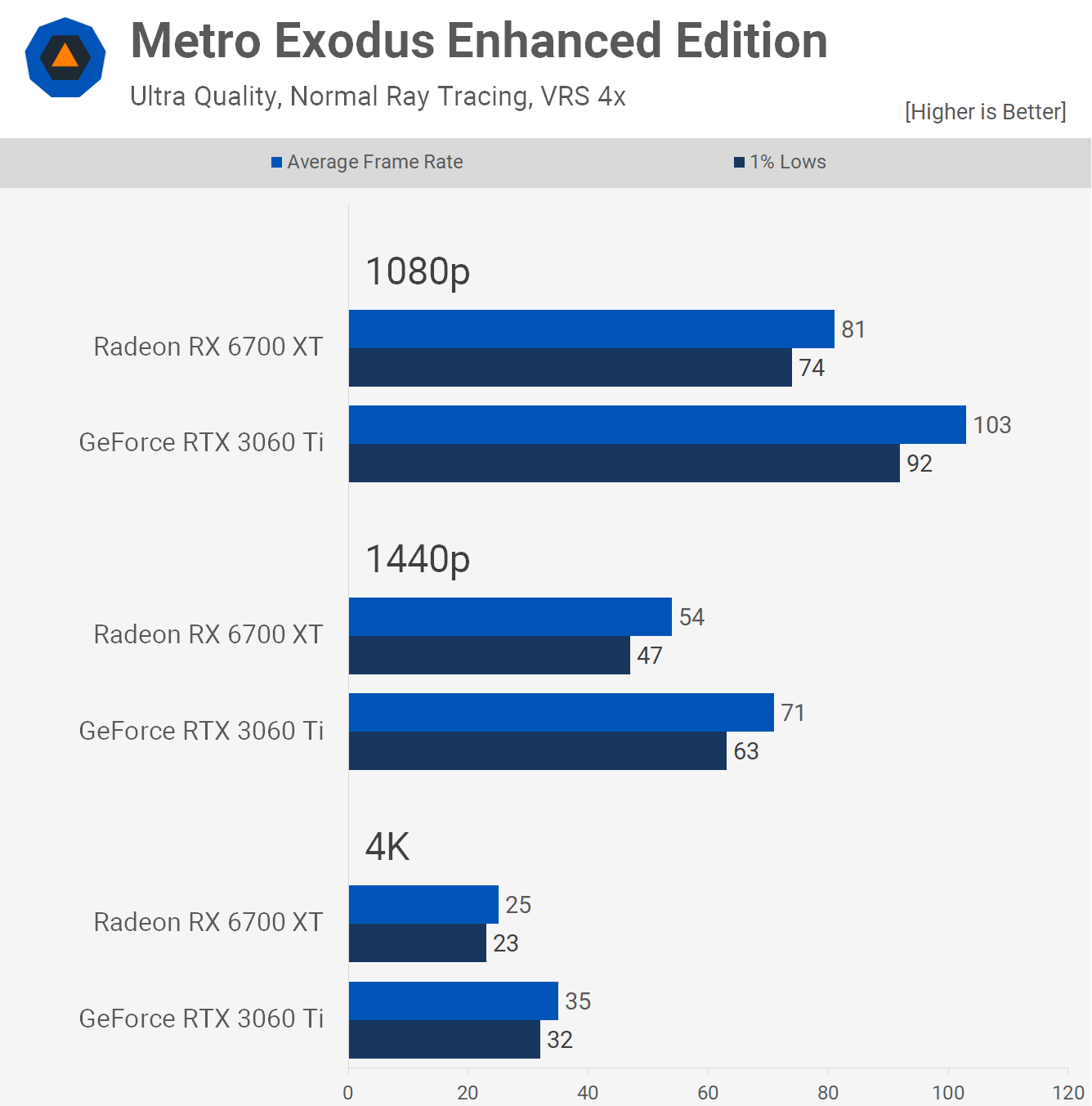
Metro Exodus Enhanced is another title that enables ray tracing by default. In this particular case, RT hardware support is required to launch the 'Enhanced' version of the game.
This is a bad title for AMD with the RTX 3060 Ti dominating the 6700 XT, offering 27% more performance at 1080p, 31% more at 1440p, and then 40% more at 4K, though neither GPU was suitable at this resolution.
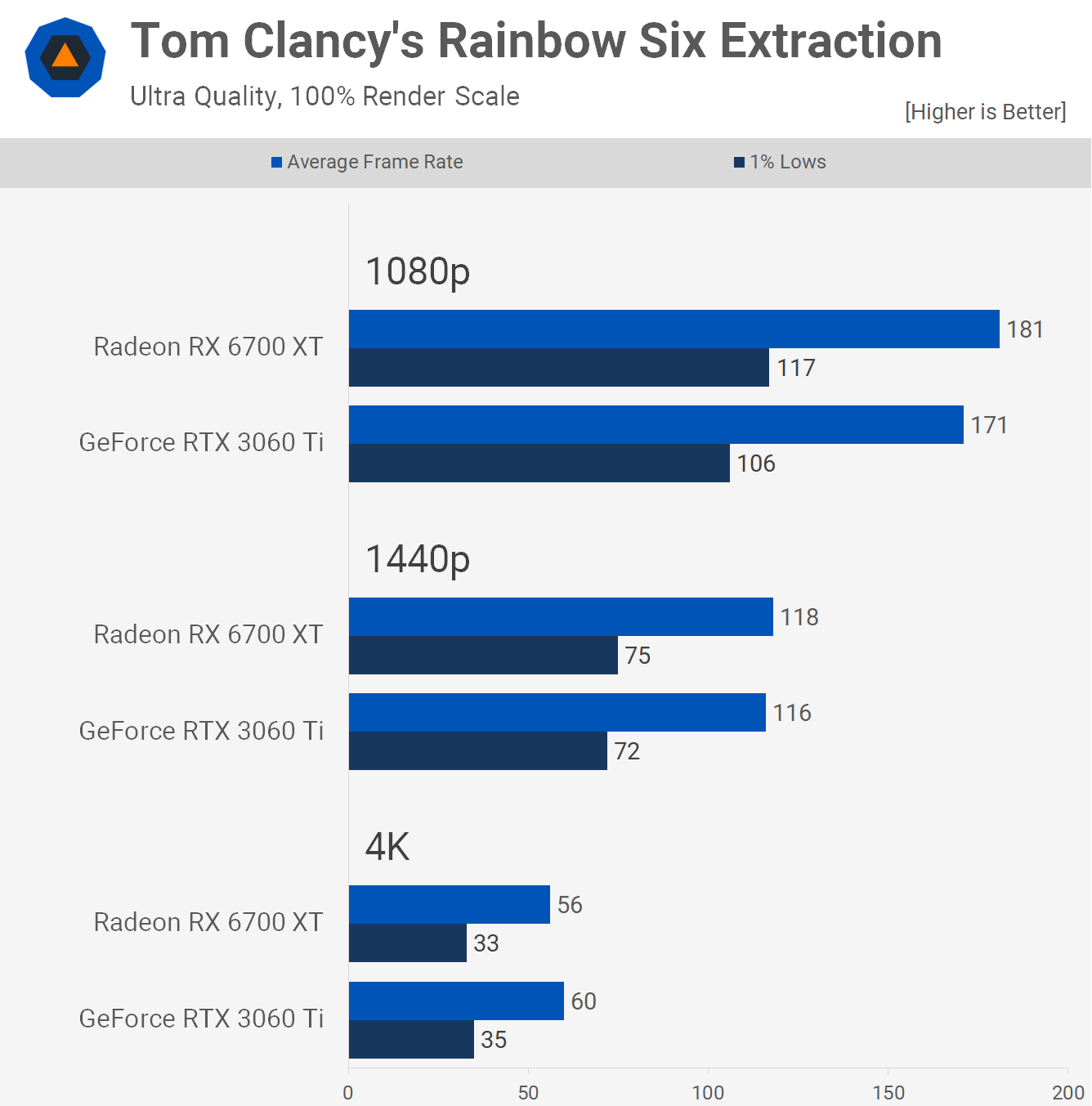
Moving on, we have Rainbow Six Extraction where performance is very similar. The 6700 XT was slightly faster at 1080p, then we see basically identical performance at 1440p, and at 4K the 3060 Ti nudged ahead, though performance overall was much the same.
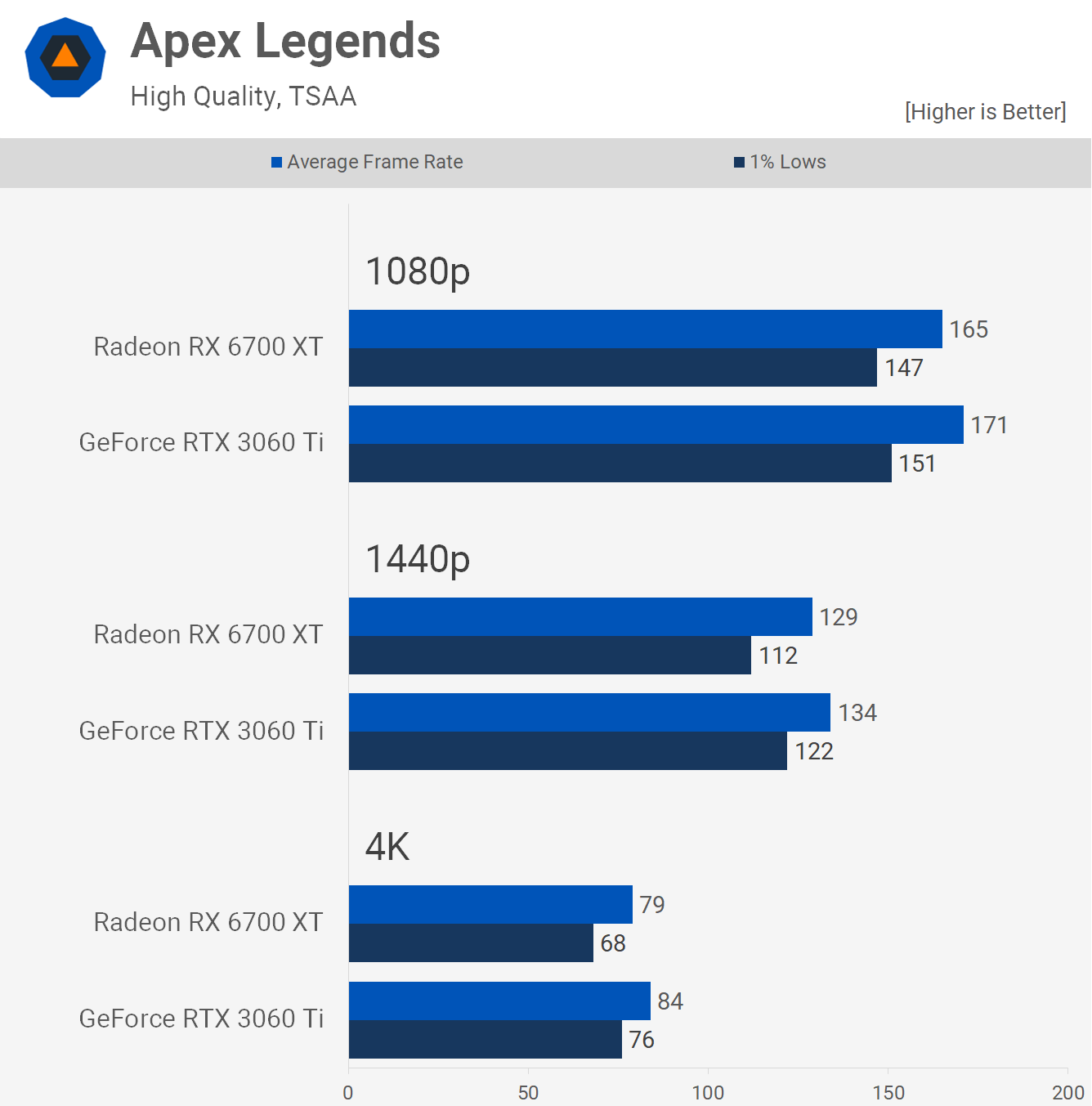
Frame rates in Apex Legends were also similar, though the RTX 3060 Ti did provide the best performance at all tested resolutions. We're only talking about a 4% difference at 1080p and 1440p with a 6% margin seen at 4K.
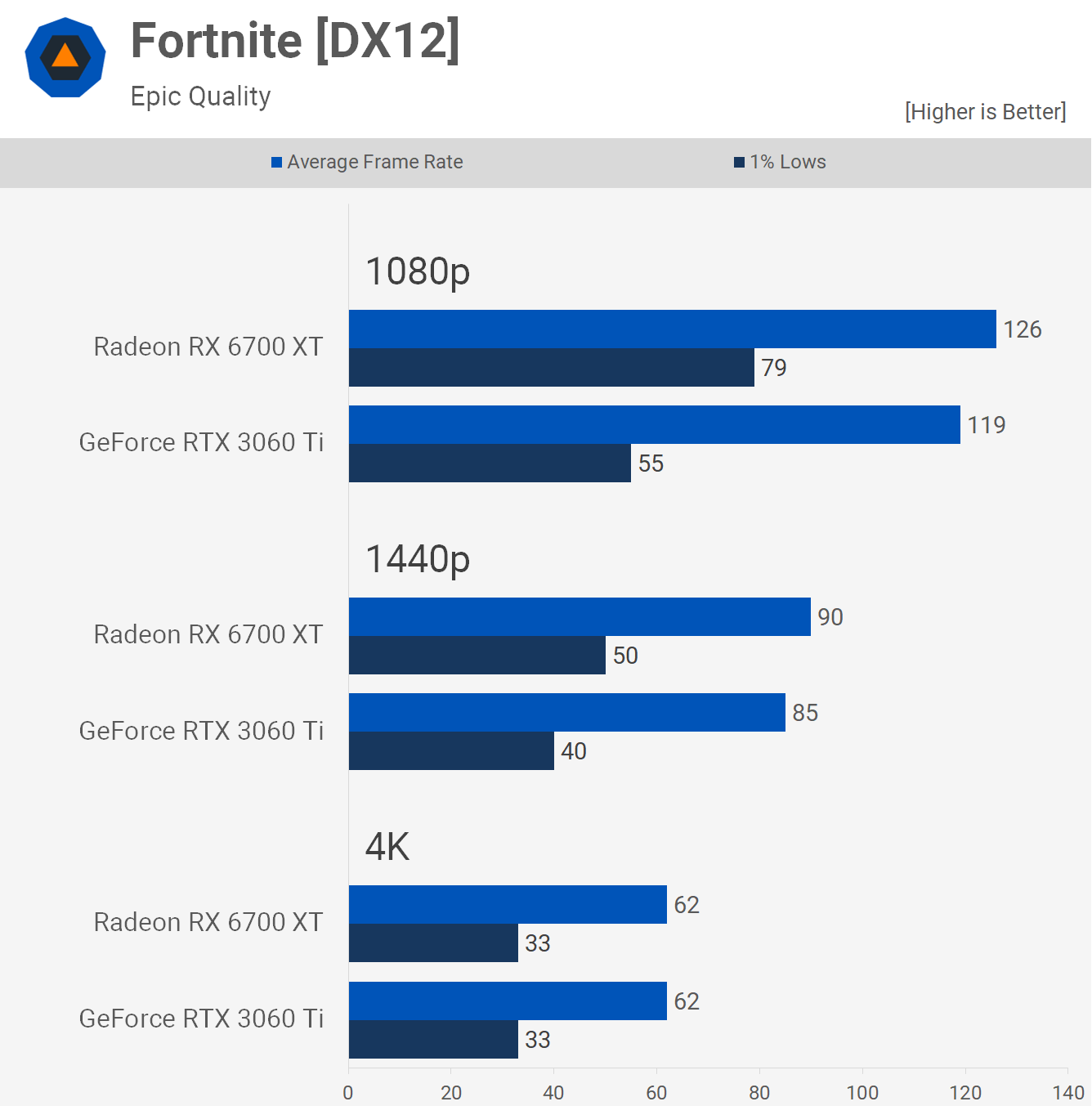
Fortnite's chapter three, season two was recently released and with it a number of performance related issues. That said, the game now appears to be in a pretty good shape, though Radeon owners will want to make sure they're running the game in the DX12 mode as it's basically broken using DX11.
Typically, Fortnite gamers will want to opt for medium level quality settings for that competitive advantage, but doing so for a GPU comparison makes it more of a CPU benchmark. Also, scaling for Radeon and GeForce GPUs is very similar.
The 6700 XT did provide noticeably better frame time performance with the latest update and this was evident at 1080p. Even at 1440p, the 1% lows were 25% higher using the 6700 XT which is a significant margin. By the time we reach 4K though any and all performance differences were neutralized.

Cyberpunk 2077 is another competitive title for the RTX 3060 Ti and 6700 XT. The Radeon GPU was a whisker faster at 1080p and 1440p, but the margins aren't worth getting excited over. Performance was basically the same as you won't be able to tell the difference between 87 and 91 fps.
Performance Summary
Based on the dozen or so games we just looked at, the RTX 3060 Ti and 6700 XT appear to be very close in terms of performance. There were a few titles that did heavily favor one over the other, but for the most part performance was similar.
We did spend a week testing through 50 games, so let's go check out that data...

Starting with the 1080p expanded benchmark data, we see that the RTX 3060 Ti was just 2% slower on average across the 50 games tested. The big wins for Nvidia came in Metro Exodus Enhanced Edition, PlayerUnknown's Battlegrounds, Warhammer Vermintide 2, War Thunder and Resident Evil Village. For AMD, the 6700 XT was most dominant in Sniper Elite 4, Assassin's Creed Valhalla, Horizon Zero Dawn, Borderlands 3, Forza Horizon 5, Warzone and The Division 2.
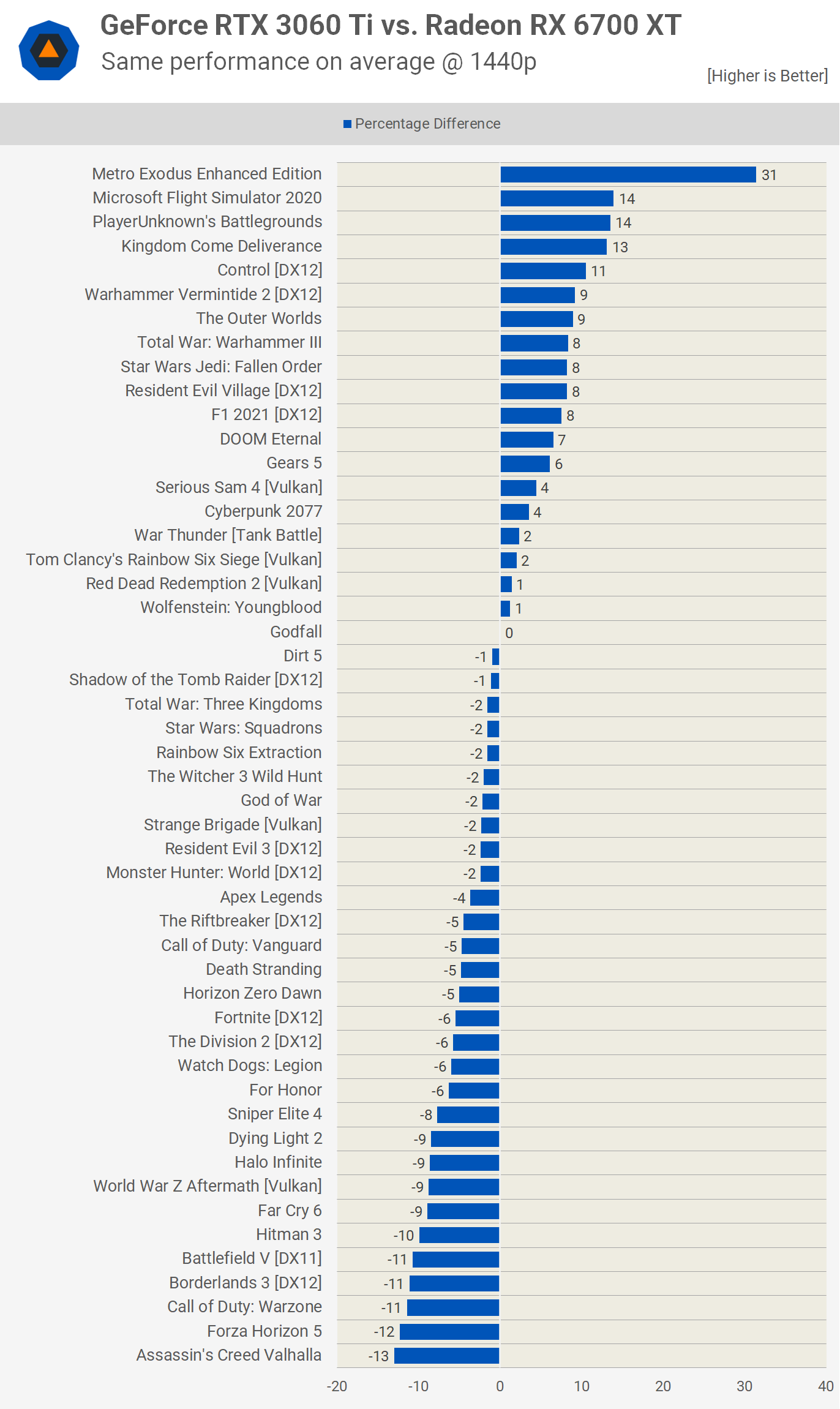
Moving to 1440p, we found a tie between the 6700 XT and RTX 3060 Ti, though that hardly means they delivered the same performance across all titles. It simply signals the margins are balanced out overall.
Of the 50 games tested, the margin was less than 10% in either direction for 39 of them. Then for 22 of the games tested the margin was 5% or less which we deem a tie.
The only outlier was Metro Exodus, the rest of the games were within a 14% margin. For those gaming at 1440p, the 6700 XT and 3060 Ti will deliver a similar experience overall.
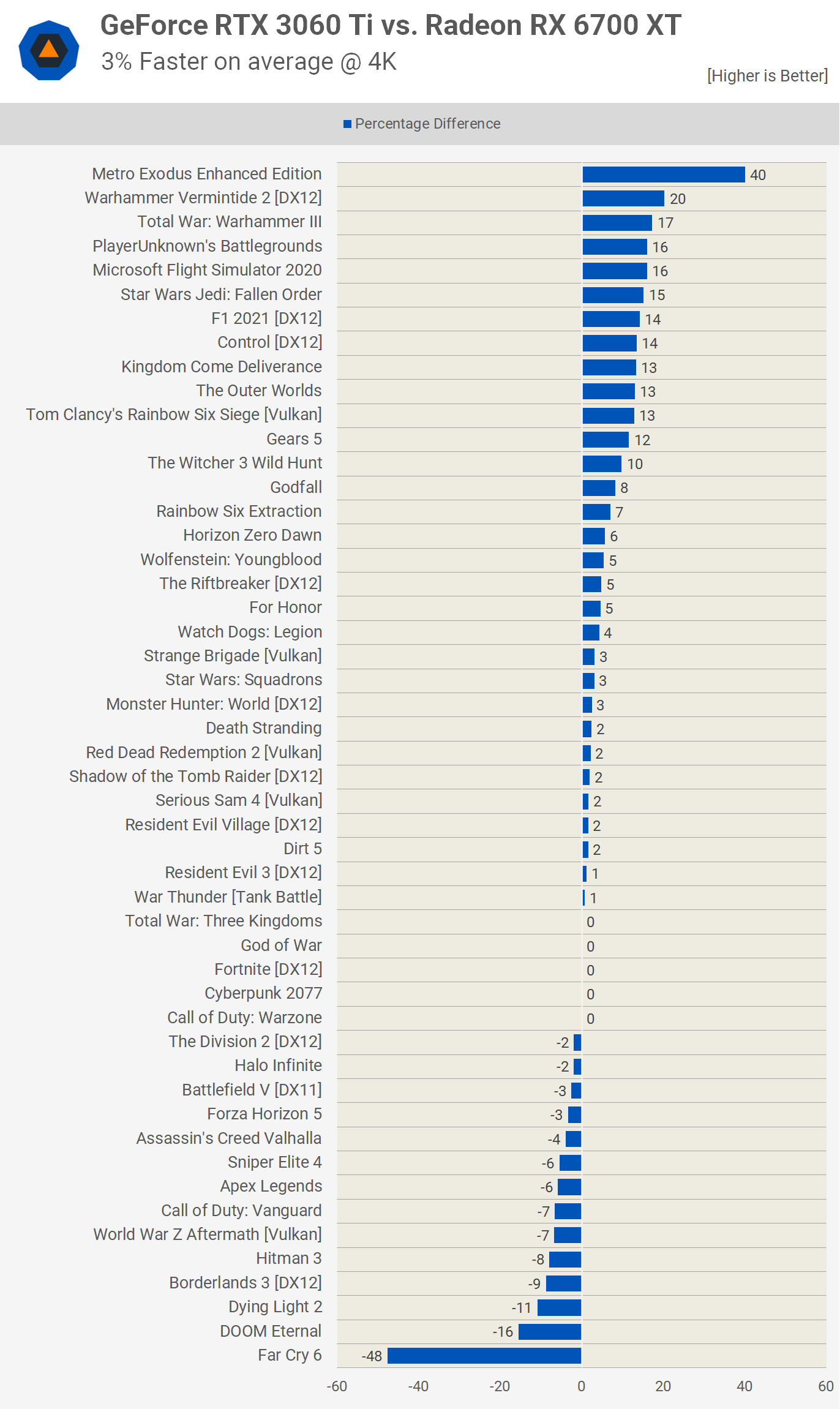
For those gaming at 4K, the results are a little more interesting as the RTX 3060 Ti is typically faster unless you run out of VRAM. This only happened on a single game we tested though we've also seen this in Ghost Recon Breakpoint, and to an extent Doom using the highest quality settings. Besides Metro Exodus, Nvidia enjoyed solid wins in Vermintide 2, Warhammer III, PUBG, Microsoft Flight Simulator 2020, and Star Wars Jedi Fallen order.
Who Wins?
This comparison is as straightforward as they come. The only advantage the Radeon RX 6700 XT has over the RTX 3060 Ti right now is the larger VRAM buffer, jumping from 8GB to 12GB. This is an advantage that will certainly serve the 6700 XT well in the future, but right now there are very few instances where VRAM becomes relevant in terms of raw performance output.
In other words, this is not an issue for the RTX 3060 Ti, and where it might be, the workaround is easy to apply and doesn't impact visuals significantly.
While we'd have preferred the RTX 3060 Ti to pack more VRAM, it's got enough to get the job done. The advantages of the RTX 3060 Ti include superior ray tracing performance – which personally I don't care for too much at this performance tier – but still you can enjoy RT effects if you want, typically at much higher frame rates than you'll get with the 6700 XT.
The RTX 3060 Ti also supports DLSS which is a key advantage at the moment. AMD is now hard at work to reduce its significance, but they've still got some way to go.
It's possible DLSS won't be a critical feature in a few years, but we never like to heavily weigh our recommendations on what could be, rather we prefer to focus on the here and now, and right now DLSS is a strong selling point of GeForce RTX GPUs.
With rasterization performance essentially the same, we don't see many reasons for buying the 6700 XT over the RTX 3060 Ti, especially when the GeForce GPU costs the same or even a little less.
We're still tracking GPU pricing closely and our recommendation remains to hold out a little longer before making any purchase if possible. But if you want to buy right now, and have ~$600 to spend, we'd go for the GeForce RTX 3060 Ti.
